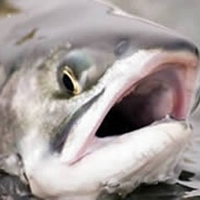 A new study published in PLOS One shows “the value of cooperative research in informing and improving salmon farm operations in British Columbia,” according to the BC Salmon Farmers Association (BCSFA).
A new study published in PLOS One shows “the value of cooperative research in informing and improving salmon farm operations in British Columbia,” according to the BC Salmon Farmers Association (BCSFA).Collaboration by industry, environmental groups and academic institutions through the Broughton Area Management Plan (BAMP) has identified the optimum time for salmon farmers to treat for sea lice.
“This is good work that has arisen from different parties coming to understand that we have a shared common goal of having healthy salmon — on our farms and in the wild,” said Sharon DeDominicis, Marine Harvest Canada’s environmental sustainability manager who represented industry in the BAMP project.
The study created mathematical models of sea lice populations that account for water temperature, salinity, host density and the use of SLICE (the treatment used for sea lice management in BC).
“This will make the forecasts much more applicable for salmon farmers in the area. It also merged together data from multiple companies and farm sites: enabling researchers to see broader trends for the entire area,” BCFSA said.
Authors of the report suggest that winter treatment —specifically January and February is most effective for managing sea lice numbers on farms in time for the March through July wild salmon migration.
“This is helpful, productive information that has been developed along with the trust built by those involved in this project,” said Mary Ellen Walling, BCFSA executive director. “It really shows what can be accomplished when everyone focuses on productive, proactive work.”





